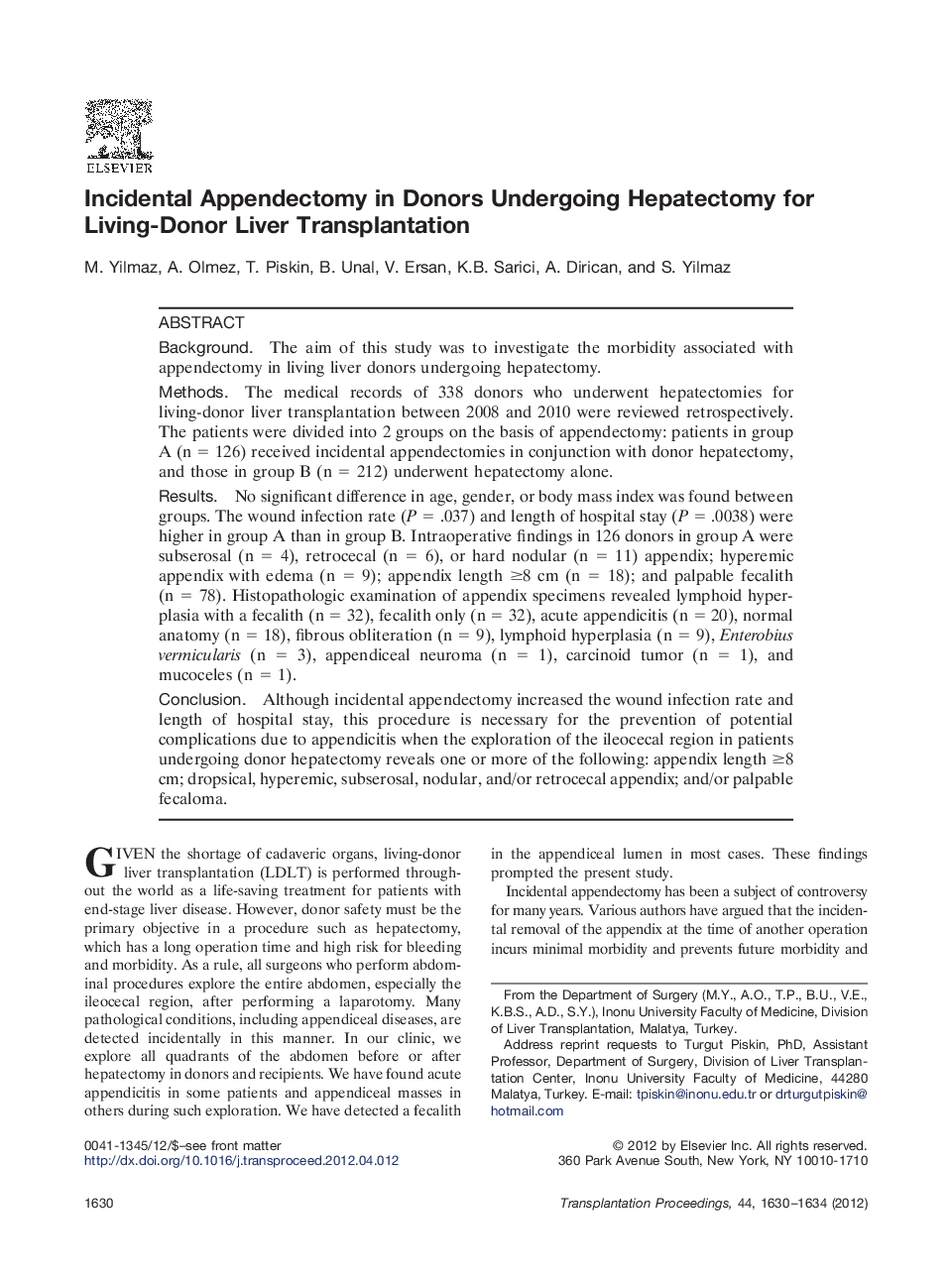| Article ID | Journal | Published Year | Pages | File Type |
|---|---|---|---|---|
| 4259925 | Transplantation Proceedings | 2012 | 5 Pages |
BackgroundThe aim of this study was to investigate the morbidity associated with appendectomy in living liver donors undergoing hepatectomy.MethodsThe medical records of 338 donors who underwent hepatectomies for living-donor liver transplantation between 2008 and 2010 were reviewed retrospectively. The patients were divided into 2 groups on the basis of appendectomy: patients in group A (n = 126) received incidental appendectomies in conjunction with donor hepatectomy, and those in group B (n = 212) underwent hepatectomy alone.ResultsNo significant difference in age, gender, or body mass index was found between groups. The wound infection rate (P = .037) and length of hospital stay (P = .0038) were higher in group A than in group B. Intraoperative findings in 126 donors in group A were subserosal (n = 4), retrocecal (n = 6), or hard nodular (n = 11) appendix; hyperemic appendix with edema (n = 9); appendix length ≥8 cm (n = 18); and palpable fecalith (n = 78). Histopathologic examination of appendix specimens revealed lymphoid hyperplasia with a fecalith (n = 32), fecalith only (n = 32), acute appendicitis (n = 20), normal anatomy (n = 18), fibrous obliteration (n = 9), lymphoid hyperplasia (n = 9), Enterobius vermicularis (n = 3), appendiceal neuroma (n = 1), carcinoid tumor (n = 1), and mucoceles (n = 1).ConclusionAlthough incidental appendectomy increased the wound infection rate and length of hospital stay, this procedure is necessary for the prevention of potential complications due to appendicitis when the exploration of the ileocecal region in patients undergoing donor hepatectomy reveals one or more of the following: appendix length ≥8 cm; dropsical, hyperemic, subserosal, nodular, and/or retrocecal appendix; and/or palpable fecaloma.
